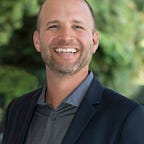Let’s make every day Hydrogen Day
The simplest element on the periodic table could power more than 400 million cars, 15 to 20 million trucks, and around 5 million buses worldwide by 2050. And California is on the cutting edge of this exciting zero emission technology.
This Hydrogen Day, let’s talk about how the future is already here.
California stands for leadership, for being on the forefront, and our innovative spirit changes lives around the world and propels the national economy. Leading environmentally and economically means active and sustained collaboration between government, communities, and industry. In transportation, it means working together to end our reliance on combustion engines. California and our industry partners are actively forging paths forward, using smart policy to increasingly leverage private investment in order to do both.
Examples of the necessary cooperation and policy have surfaced since California’s fire season became a fire siege. Governor Newsom issued an executive order requiring sales of all new passenger vehicles to be zero emission by 2035, the California Air Resources Board (CARB) signed Framework Agreements with automakers committed to climate and air quality solutions. The California Public Utilities Commission (CPUC) approved the largest utility investment in charging infrastructure in the country. And the California Energy Commission (CEC) awarded funding to accelerate our state’s hydrogen station network. All these moves have one thing in common: leadership from both government and industry.
The hydrogen announcement is perhaps the least known example of what happens when government and industry challenge each other to do better for the communities they represent and work within.
Industry asked for help getting to scale and CARB responded with tweaks to the Low Carbon Fuel Standard to help ensure hydrogen stations can be built ahead of demand. The CEC added a multi-year award that enabled market players to set up larger, longer-term supply contracts. And the response from industry was astounding.
Three years ago, California was the lead investor, paying for 70% of capital costs to seed the market. Today, that equation has flipped: the private sector is paying for 70%.
Think about that for a moment: just three years ago, California had to pull the market. Today, industry is leveraging government funding and the Low Carbon Fuel Standard to push the market ahead. What’s more, industry partners have driven down costs while increasing scale. That means these stations are bigger, cheaper, and more robust — like the gasoline stations drivers are used to, but with none of the mess. Addressing climate change isn’t just good for the environment, it’s good for business.
Subject to future funding allocations, the move will add 110+ large stations to California’s zero emission vehicle (ZEV) network that can each fuel multiple cars, from empty to full, in the time it takes to use the restroom and thoroughly wash your hands. For drivers and riders, this means more access to clean hydrogen. For workers, it means more jobs (approximately 1,000 full time and 1,000 part time to support 110+ new stations). For the environment, it means a core solution to climate change is accelerating. And for all residents of California, it means cleaner air.
In this state we have ambitious clean transportation/energy targets because the electric future is here. Because the effects of climate change we thought we’d see in 20 years are all around us.
Across the West Coast temperatures are soaring, fires are raging, the sky has shown us apocalyptic hues, and the air recently became too toxic to breathe. While the federal government may deny science, the debate is over on climate change. In a recent article addressing California’s wildfires, the Union of Concerned Scientists stated, “in the long-term, climate action is the best tool we have. When we reduce global warming emissions, we slow the growth of climate risks, including wildfire.” Governor Newsom says it time and again: “the hots are getting hotter, the dries are getting drier.”
California has always been the state that leads the nation into the future. Today, on Hydrogen Day 2020, look to California once more. The future is here.
